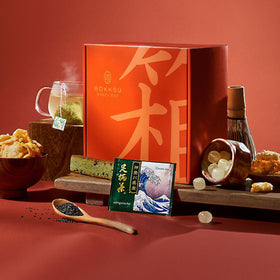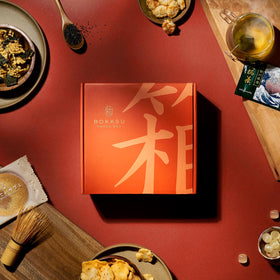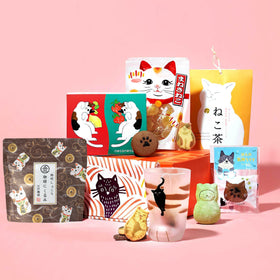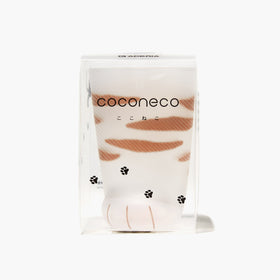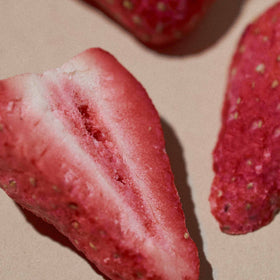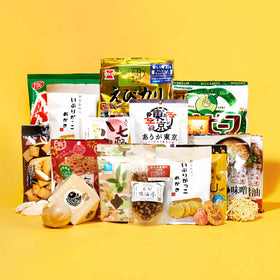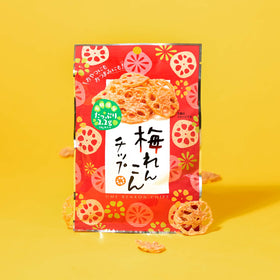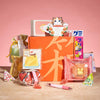From Forest to Table: Gifts from Japan’s Woodland Craftsmen
Japan’s Deep Connection to Woodcraft

Japan's abundant forests have long shaped the nation's culture, design, and way of life, with wood valued as both a practical resource and a spiritual medium. From the refined beauty of temples and shrines to the warmth of traditional homes, wood lies at the heart of Japanese carpentry, celebrated for its precision and artistry. In Shinto tradition, forests are sacred spaces where kami (deities) reside and ancestral spirits are believed to return, fostering a deep respect for nature. This reverence carries into architecture, where buildings are designed not only to provide shelter but also to exist in harmony with their surroundings. Beyond architecture, forests inspire poetry, crafts, and even modern practices like shinrin-yoku (forest bathing), which highlights the healing connection between people and the natural world. In this way, Japan’s forests are more than resources—they are sacred landscapes that continue to shape the balance between people, nature, and craft.
The Tradition of Japanese Woodworking

The tradition of Japanese woodworking is one of craftsmanship, durability, and deep respect for both the material and the process. For centuries, artisans have perfected joinery techniques that require no nails, screws, or adhesives. Instead, each piece of wood is precisely cut, fitted, and interlocked, resulting in structures that stand the test of time while showcasing the natural beauty of the grain. These skills, carefully passed down through generations, carry the wisdom of the past into the present. Every choice—from the type of wood to the alignment of joints—reflects a commitment to tradition, precision, and continuity.
Among the many techniques that have evolved over centuries, kumiko and magewappa stand out as prime examples of refined Japanese woodworking. Kumiko is the delicate latticework often used in shoji screens and architectural panels, where tiny, precisely cut pieces of wood are fitted together without glue, held only by pressure and craftsmanship. Traditionally made from hinoki cypress, kumiko patterns draw inspiration from nature and are most often seen in shoji doors and screens, where they gently filter light and air, creating a serene, almost spiritual atmosphere.
Magewappa, on the other hand, originates in Odate, Akita Prefecture, dating back to the 17th century. There, artisans refined a process of boiling and bending thin strips of local cedar to create lightweight, durable pieces. The cedar’s natural antibacterial qualities and its ability to preserve freshness make magewappa both practical and elegant, while the craftsmanship behind each piece ensures durability that can last a lifetime. Together, traditions like kumiko and magewappa exemplify how Japanese woodworking can take simple wood and make it into enduring works of art, blending history, process, and meaning in every creation.
Artisan Towns Known for Woodwork

Across Japan, different regions have cultivated their own woodworking traditions, each shaped by the high quality materials provided by their local forests. In Ishikawa Prefecture, the town of Yamanaka is famous for its lacquerware, a craft with more than 400 years of history. Here, artisans use a woodturning technique called kiji-biki, in which lumber is shaped on a lathe and carved with fine vertical lines that highlight the wood's natural grain. Once lacquered, these bowls and vessels combine durability with refined elegance, embodying both function and artistry.
In Nagano, the forests of the Kiso Valley are home to Nagiso Rokuro Zaiku, a traditional woodturning craft that transforms thick logs into trays, bowls, and other household items. Artisans here emphasize the natural beauty of the grain, shaping and polishing each piece to showcase the wood itself. The region is also renowned for Kiso furniture, prized for its durability and timeless design, often crafted from high-quality trees like hinoki cypress.
Moving north to Akita, visitors encounter two very different yet equally remarkable traditions: magewappa, where thin strips of cedar are steamed and bent into lightweight containers, and kabazaiku, an art that uses carefully polished bark from mountain cherry trees to craft decorative items like tea caddies. Each process reflects the region’s history and resources, highlighting the close bond between artisans and their environment. With centuries of skill, thoughtful making, and deep respect for the forest, these traditions continue to thrive and evolve today.
Everyday Beauty: Handcrafted Wooden Tableware

In Japan, even the simplest daily rituals, whether it’s sharing a meal, brewing tea, or setting the table, are enriched by the quiet elegance of wooden crafts. A smooth wooden bowl adds warmth and comfort to food, while chopsticks carved from cedar or cherry lend a tactile grace to each bite. Trays and tea utensils, often made as part of a larger collection, capture the seasonal beauty of nature, reflecting the wood’s unique texture, color, and subtle fragrance. These pieces create moments of harmony that bring people closer to nature with every use. Built to last for generations, they transform ordinary meals into mindful experiences that honor both tradition and the artistry of natural materials.
The Seasonal Appeal of Wooden Gifts in Autumn

Autumn in Japan paints the landscape in vivid shades of red, orange, and gold, and this seasonal beauty often inspires the way people give gifts. Wooden crafts are especially meaningful at this time of year, as their warm tones mirror the brilliance of fall foliage and bring a quiet sense of harmony into the home. A handcrafted tray, a polished tea caddy, or even a pair of finely carved chopsticks carries not only the skill and artistry of the maker but also the spirit of the season itself. Each piece feels personal, timeless, and deeply connected to nature’s cycles. Unlike mass-produced goods, these items hold a character and distinguished quality all their own, making them thoughtful gifts that celebrate craftsmanship, tradition, and the fleeting yet unforgettable beauty of autumn.
Wooden Sweets Trays and Tea Accessories

In Japanese culture, offering snacks or sweets to guests is more than a simple courtesy—it is a heartfelt gesture of hospitality. Small wooden trays, coasters, and teaware accessories often set the stage, turning even the lightest refreshment into a moment of care and beauty. When a visitor arrives at a house, it is customary to serve wagashi or delicate seasonal treats alongside tea, each piece thoughtfully arranged on a tray that functions not only as a stand but also as an artistic expression. A finely crafted coaster beneath a teacup or the smooth edges of a wooden tray framing the sweets add layers of refinement to the presentation. Even the act of bringing out tea bags or loose leaves stored in a wooden box conveys respect, showing that every detail has been considered. In this way, Japanese hospitality goes beyond food and drink—it creates a warm, harmonious experience where intention and meaning are felt in every gesture.
Forest Heritage in Modern Design

Contemporary Japanese artisans are creating wooden crafts that reinterpret tradition through modern styles, resulting in pieces that feel both timeless and refreshingly new. A minimalist bowl or a tray with clean, geometric lines represents the precision and care of centuries-old techniques, yet blends seamlessly into today’s interiors. Lacquered finishes highlight every subtle detail of the grain, marking the perfect balance between heritage and innovation. By combining old and new, these crafts remain practical for everyday use while also serving as expressions of culture and artistry, keeping Japan’s legacy alive in forms that resonate with modern life.
Sustainable & Eco-Friendly Aspects of Japanese Wood Gifts

Handcrafted wooden gifts hold a sense of permanence that disposable packaging or mass-produced items can never match. Made with both beauty and function in mind, they’re eco-friendly and reusable, offering an option that respects the environment while delighting the recipient. A wooden tray, box, or set of chopsticks can be used every day yet last forever, becoming pieces that feel like a natural part of the home. Choosing gifts like these honors both tradition and sustainability, transforming simple daily rituals into moments of lasting value.
Perfect Gift Ideas from Japan’s Woodcraft Tradition

For those looking to shop for meaningful presents, artisan chopsticks, sake cup sets, serving boards, and decorative wood panels make thoughtful gifts that balance cultural depth with everyday function. While the price may vary depending on craftsmanship and materials, what they truly offer is far greater—the essence of Japanese tradition expressed through practical beauty. These items not only complete a dining or living space but also celebrate the relationship between giver and receiver, where the real value lies in the thought and care behind each piece.
Bringing Artisan Gifts Home with Bokksu Boutique

In the end, Japanese woodcraft is more than artistry—it is a reflection of culture, carrying stories of nature and generations of skilled hands. Bokksu Boutique continues this spirit by offering carefully curated artisan gifts, including select woodcraft pieces that make meaningful, lasting presents. When you visit the shop, you’ll find items that reflect a commitment to quality and sustainability, crafted by local makers whose work helps support family businesses and preserve traditions for their children. Whether you’re looking for a small tray, a set of chopsticks, or a decorative panel, Bokksu Boutique can ship these treasures worldwide, giving you a ticket to experience the essence of Japan’s craftsmanship no matter where you are.
Author Bio




